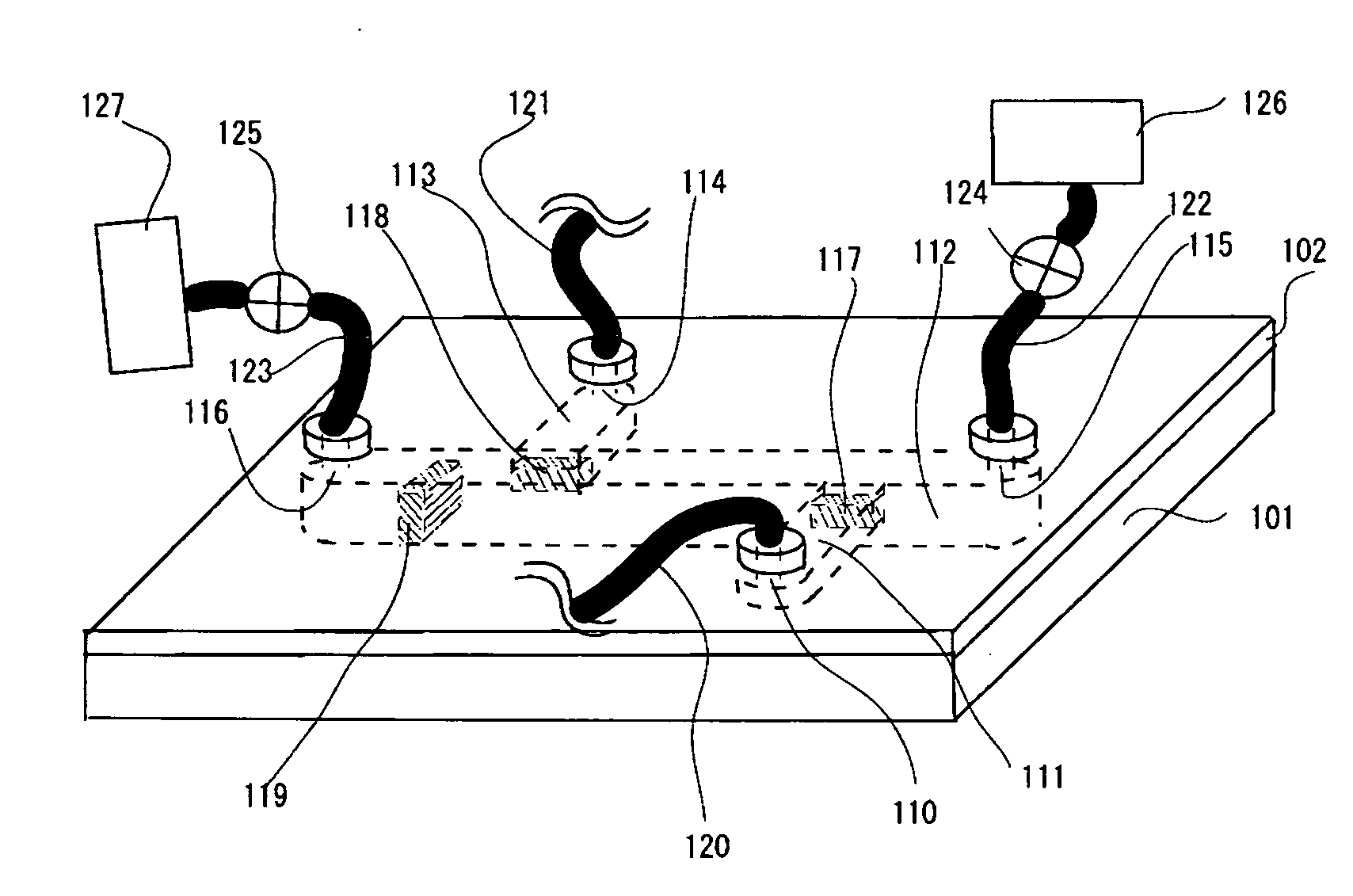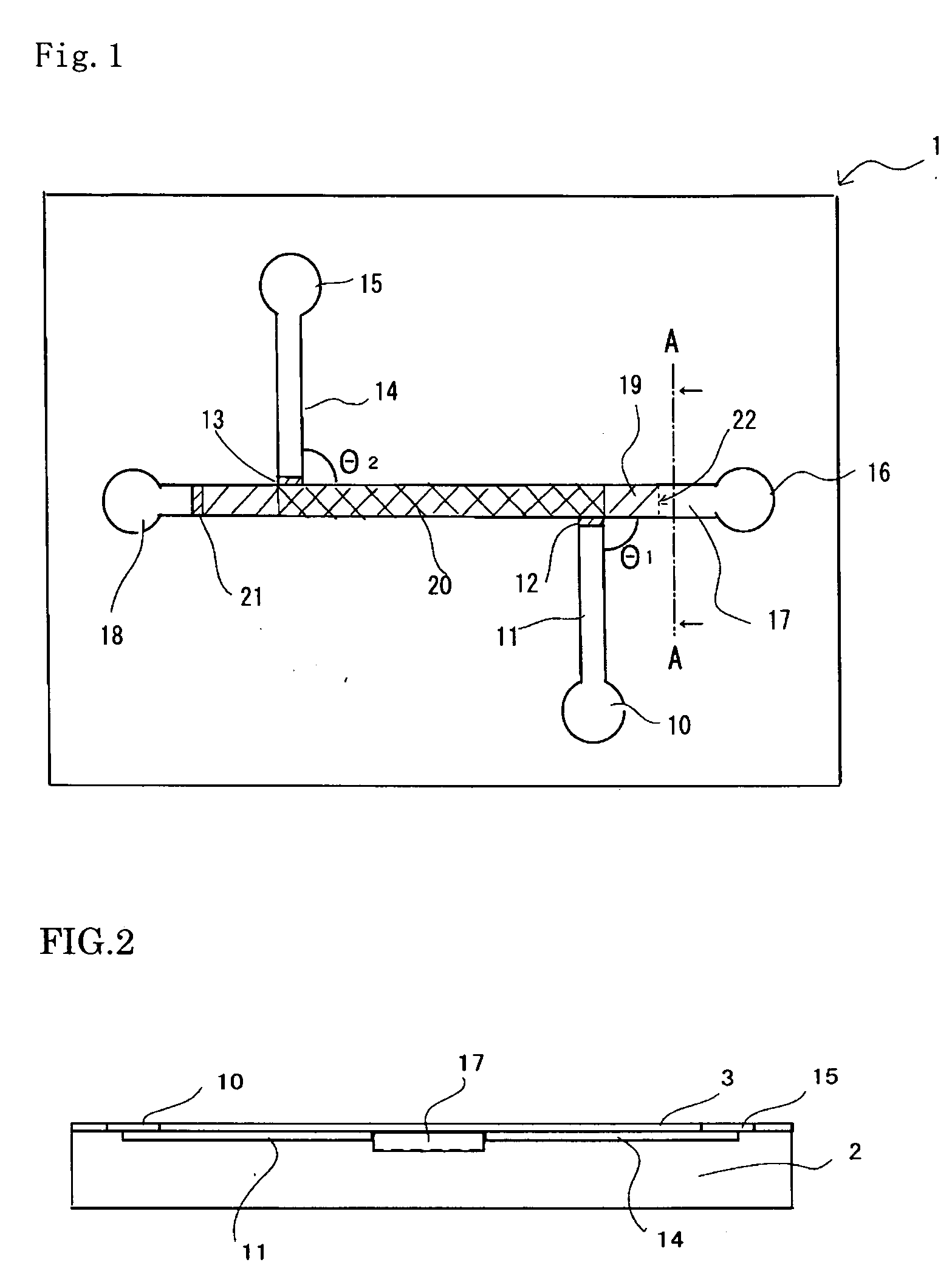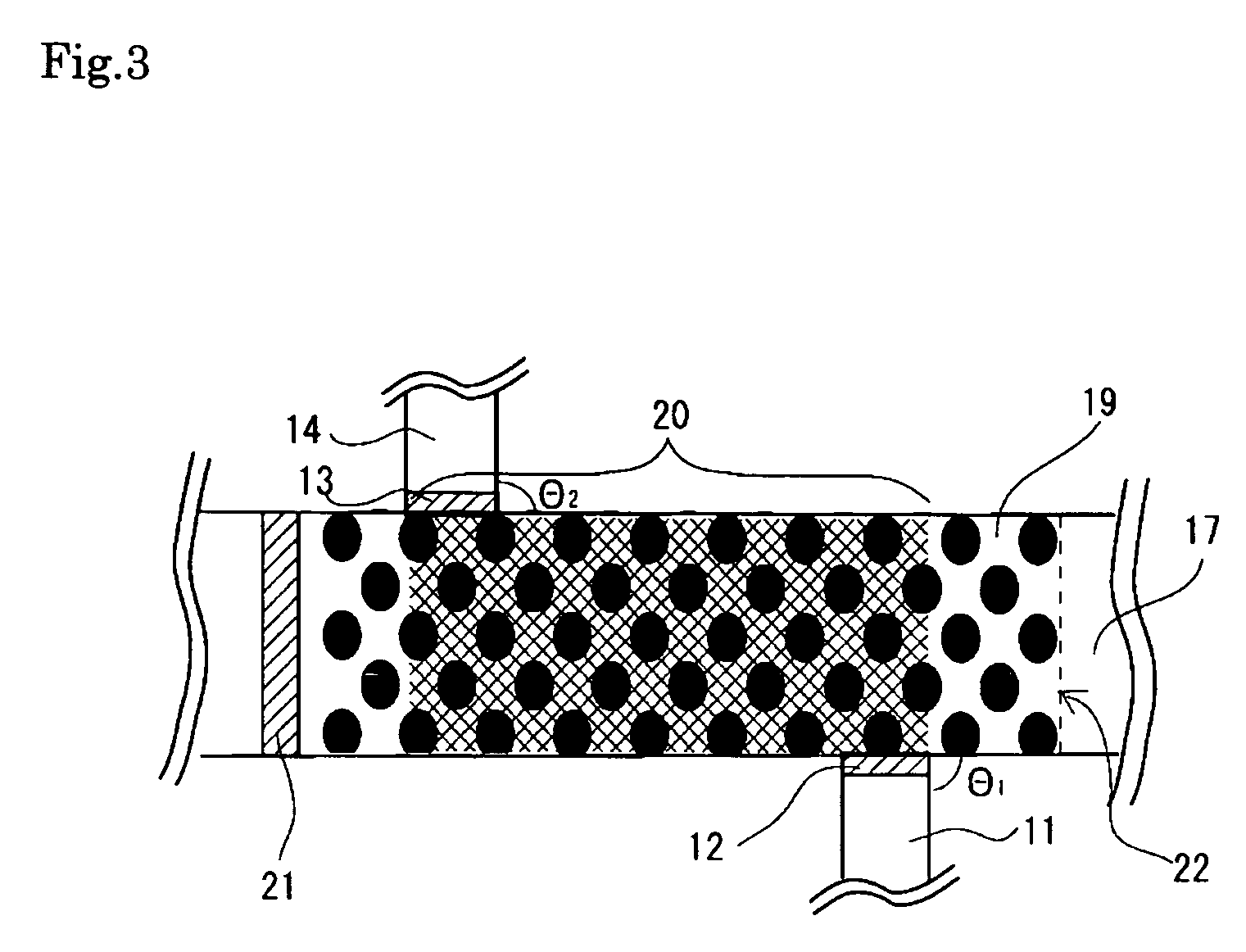Analytical microchip
a microchip and analytical technology, applied in the field of analytical microchips, can solve the problems of insufficient detection reproducibility and difficulty in injecting an accurate amount of solid particles into the chip, and achieve the effects of enhancing detection accuracy, preventing migration and fluctuation of solid particles, and facilitating production
- Summary
- Abstract
- Description
- Claims
- Application Information
AI Technical Summary
Benefits of technology
Problems solved by technology
Method used
Image
Examples
embodiment 1
[0087] An analytical microchip 1 according to embodiment 1 will be described with reference to FIGS. 1 to 3. FIG. 1 is a plan view of the analytical microchip 1, FIG. 2 is a sectional view of the analytical microchip 1 taken along the line A-A, and FIG. 3 is a partially enlarged view mainly of a solid-particle-filled area of the analytical microchip 1.
[0088]
[0089] First, the main portions (the essential constituent elements of the present invention) of the analytical microchip 1 will be described referring to FIG. 3. The analytical microchip 1 according to the present invention has: a reaction path 17 composed of a depression groove formed on a main substrate 2; a particle-filled area 19 formed by filling the reaction path 17 with a group of solid particles having reactants immobilized on the surfaces of the solid particles; a test-solution introducing path 11 for introducing a test solution into the reaction path 17 from outside of the microchip; a test-solution discharging path 1...
embodiment 2
[0126] Embodiment 2 will be described with reference to FIG. 4, which is a plan view of a microchip according to embodiment 2, showing the main portions of the microchip. In embodiment 2, the structures of the reaction path, the test-solution introducing path, and the test-solution discharging path shown in FIG. 1 are respectively replaced with the structures shown in FIG. 4. The rest are as described in embodiment 1.
[0127] As shown in FIG. 4, in the structure of a microchip according to embodiment 2, a test-solution introducing paths 51 has a multi-stepwise furcation structure furcating into branches in a multi-stepwise manner (a three-stepwise furcation in FIG. 4) toward the lower stream. The test-solution introducing path 51, which has a multi-stepwise furcation structure, is located so as to be orthogonal to a reaction path 60. At one end (the right side in FIG. 4) of the reaction path 60, a first washing aperture is provided, and at the other end of the reaction path 60, a sec...
embodiment 3
[0132] In embodiment 3, the test-solution discharging path having the inverted-triangle tapering structure in embodiment 2 is replaced with a discharging path having an inverse multi-stepwise furcation structure as shown in FIG. 5. The rest are as described in embodiment 1 or 2. Specifically, in embodiment 3, the test-solution discharging path 85 has an inverse multi-stepwise furcation structure furcating into a plurality of branches in an equal to or more than two steps (three steps in FIG. 5) from the lowermost stream side toward a reaction path 88. A group of second damming portions 84 are provided in the lowermost-stream portions (points of connection with the reaction path 88) of the discharging path having an inverse multi-stepwise furcation structure.
[0133] The uppermost-stream-side flow paths of the test-solution discharging path 85 having an inverse multi-stepwise furcation structure are arranged to oppose to the lowermost-stream-side flow paths of a test-solution introduc...
PUM
| Property | Measurement | Unit |
|---|---|---|
| thickness | aaaaa | aaaaa |
| diameter | aaaaa | aaaaa |
| groove depth | aaaaa | aaaaa |
Abstract
Description
Claims
Application Information
 Login to View More
Login to View More - R&D
- Intellectual Property
- Life Sciences
- Materials
- Tech Scout
- Unparalleled Data Quality
- Higher Quality Content
- 60% Fewer Hallucinations
Browse by: Latest US Patents, China's latest patents, Technical Efficacy Thesaurus, Application Domain, Technology Topic, Popular Technical Reports.
© 2025 PatSnap. All rights reserved.Legal|Privacy policy|Modern Slavery Act Transparency Statement|Sitemap|About US| Contact US: help@patsnap.com



